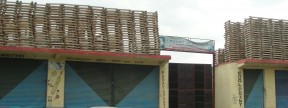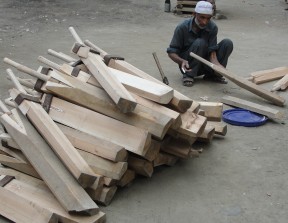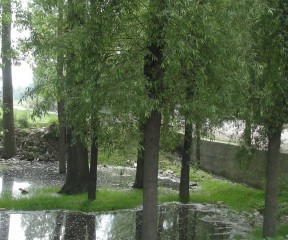 “So what did you get from Kashmir? Pashmeena shawls, saffron, carpets, walnut wood articles?” asked an inquisitive neighbor.
“So what did you get from Kashmir? Pashmeena shawls, saffron, carpets, walnut wood articles?” asked an inquisitive neighbor.
“Er…cricket bats,” I replied.
She responded with a huge pause. And then I put the receiver away from my ears.
“Cricket bats! Who on earth gets cricket bats from Kashmir? Why on earth will one get a cricket bat from Kashmir?” she sounded disappointed for no reason.
“For they grow them in their backyards.” I answered.
Yes, it’s a little known fact that Kashmir produces the most cricket bats in the country. It’s one of their biggest industries and perhaps most of the bats seen on cricket pitches this IPL season come from this small town of Sangam where most of the over 200 cricket processing units are located.
Sangam is en route to Pahalgam (35 kms from Pahalgam towards Srinagar) and has breath-taking saffron fields and Avantipura ruins; a ninth century Vishnu temple. And when you pass this town by, you see tall piles of neatly stacked clefts nestled among trees, over roof tops, outside workshops, on both sides of the highway; like they have replaced the willows, the wood that translates into cricket bats.
The trees are conspicuous by their absence in the bare patches in the once lush belts of Anantnag and Baramullah, where once were willows. Due to surging demand of bats, especially because of IPL, willows that should ideally be felled at the age of 12 years are now being felled as early as five or six years.
 The wood is first chiseled and sawed from trunks through a machine into a cleft. The cylindrical cane cricket bat handles, all imported from Singapore, are then pushed into the grooves. They are then further sent for shaping, polishing, and packaging. While English willows are more known for their quality (willow trees are specially planted for manufacturing of cricket bat vs. Kashmiri willows) and grading (regular to Test match quality bats), Kashmiri bats are not very detailed about their grading. Every processing unit has its outlet on the highway where you can choose from a wide variety of sizes. Prices vary, from as low as Rs 100 to as high as Rs 8000, the price inversely proportional to the weight of the bat.
The wood is first chiseled and sawed from trunks through a machine into a cleft. The cylindrical cane cricket bat handles, all imported from Singapore, are then pushed into the grooves. They are then further sent for shaping, polishing, and packaging. While English willows are more known for their quality (willow trees are specially planted for manufacturing of cricket bat vs. Kashmiri willows) and grading (regular to Test match quality bats), Kashmiri bats are not very detailed about their grading. Every processing unit has its outlet on the highway where you can choose from a wide variety of sizes. Prices vary, from as low as Rs 100 to as high as Rs 8000, the price inversely proportional to the weight of the bat.
Just like any other small town, village, city, state in India, cricket is also the most popular sport in Kashmir. It is not an unusual sight to see children and youngsters play cricket in gullies or huge playgrounds. I even noticed hoardings of local premier league matches (Police Premier Leagues and Anantnag Premier League matches)
The 200 or more bat manufacturing units across Kashmir provide employment to over 15,000 individuals in the valley. But that too is smudged by rampant smuggling of clefts into Punjab where they are converted into finished products. Lack of regulation policies, corruption, and little care for the beautiful valley have unfortunately pervaded this only industrial practice in Kashmir.
 So yes, I have nearly plucked a cricket bat off a willow tree for my son. I don’t know if I should feel good for contributing to the economy of the valley or weep for the environment. The willows are weeping too perhaps but is anyone listening?
So yes, I have nearly plucked a cricket bat off a willow tree for my son. I don’t know if I should feel good for contributing to the economy of the valley or weep for the environment. The willows are weeping too perhaps but is anyone listening?






wow! I’m sure not many people know these facts about cricket bats … or about the weeping willows of Kashmir!